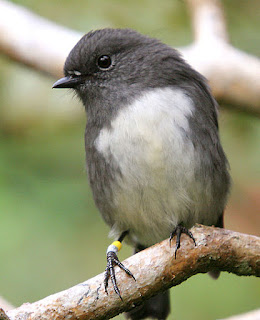Obviously, the plants and animals of New Zealand have been evolving in isolation from the rest of the world for a long, long time. Virtually all of the reptiles and mammals that once roamed the islands gradually disappeared so New Zealand remained a bird paradise for millions of years.
When humans first arrived, maybe 500 - 700 years ago, researchers believe there were about 200 different species - nearly all found only on these remote islands. Polynesians, later known as Māori, and then Europeans brought other mammals with them and the birds became a major food source for all of the newcomers. Extinctions ensued, beginning with the group of species now called Moa; some of which were up to 12 feet tall.
Hiking through the forests today, the plants and birdsongs are so remarkably different that I constantly feel like I'm on another planet. Of the dozens of species that are not found anywhere else on earth, a few stick out in my mind.
As a small, shy bird, the kiwi may serve as a national symbol, but it is seldom seen. Wherever one turns, though, one sees and hears the cry of the Tui. That's the bird I most associate with this country.
My favorite songbird, though is the korimako or bellbird. Captain James Cook famously described it’s song, “it seemed to be like small bells most exquisitely tuned.” To hear them, just search "New Zealand bellbird song" on Youtube.
A huge forest bird is the magnificent kererū.
The flightless Wekas can be pests on the trail as they love to beg for crumbs.
Piwakawakas (fantails) and tiny kakaruwais (robins) also stalk the trails because hikers stir up bugs that they eat.
I suppose my favorite is the Pūkeko, though, because they have big feet, just like me.









No comments:
Post a Comment